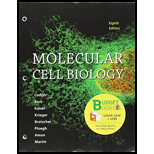
To Review:
The definition of the primary secondary and the tertiary protein.
The types of the secondary proteins.
The forces, which hold the secondary and the tertiary structures.
Introduction:
Proteins are the molecules made up of a sequence of the amino acids. Depending on the complexity of the protein structures, it can be classified into four groups, primary, secondary, tertiary and quaternary proteins.
Explanation of Solution
Primary: The primary structure of the protein is referred to the linear sequence of the amino acids. They do not have any branch or folding.
Secondary: The secondary structure refers to the folding of the protein polypeptide. The primary chain is folded in a specific pattern with the help of hydrogen bonds and disulfide linkage.
Tertiary: The interaction of the secondary structure through various types of bond such as disulfide and hydrogen bond to form a specific 3-dimensional organization is tertiary structure.
A single polypeptide primary chain interacts with different amino acids present and form either beta platelet or alpha helix structure, which are the major type of the secondary structure.
The secondary and the tertiary structures of the proteins are stabilized by the hydrogen bonding between the amino acids and the disulfide linkages. The Vander wall forces also helps in the maintenance of the 3-dimensional structure.
The linear chain of the amino acids forms the primary chain and the folding of the primary chain form secondary structure, which is divided into alpha helix and beta platelet sheets. The secondary structure further folds and give rise to tertiary complicated structures.
Want to see more full solutions like this?
Chapter 3 Solutions
Loose-Leaf Version for Molecular Cell Biology & LaunchPad for Molecular Cell Biology (6 month access)
 Human Anatomy & Physiology (11th Edition)BiologyISBN:9780134580999Author:Elaine N. Marieb, Katja N. HoehnPublisher:PEARSON
Human Anatomy & Physiology (11th Edition)BiologyISBN:9780134580999Author:Elaine N. Marieb, Katja N. HoehnPublisher:PEARSON Biology 2eBiologyISBN:9781947172517Author:Matthew Douglas, Jung Choi, Mary Ann ClarkPublisher:OpenStax
Biology 2eBiologyISBN:9781947172517Author:Matthew Douglas, Jung Choi, Mary Ann ClarkPublisher:OpenStax Anatomy & PhysiologyBiologyISBN:9781259398629Author:McKinley, Michael P., O'loughlin, Valerie Dean, Bidle, Theresa StouterPublisher:Mcgraw Hill Education,
Anatomy & PhysiologyBiologyISBN:9781259398629Author:McKinley, Michael P., O'loughlin, Valerie Dean, Bidle, Theresa StouterPublisher:Mcgraw Hill Education, Molecular Biology of the Cell (Sixth Edition)BiologyISBN:9780815344322Author:Bruce Alberts, Alexander D. Johnson, Julian Lewis, David Morgan, Martin Raff, Keith Roberts, Peter WalterPublisher:W. W. Norton & Company
Molecular Biology of the Cell (Sixth Edition)BiologyISBN:9780815344322Author:Bruce Alberts, Alexander D. Johnson, Julian Lewis, David Morgan, Martin Raff, Keith Roberts, Peter WalterPublisher:W. W. Norton & Company Laboratory Manual For Human Anatomy & PhysiologyBiologyISBN:9781260159363Author:Martin, Terry R., Prentice-craver, CynthiaPublisher:McGraw-Hill Publishing Co.
Laboratory Manual For Human Anatomy & PhysiologyBiologyISBN:9781260159363Author:Martin, Terry R., Prentice-craver, CynthiaPublisher:McGraw-Hill Publishing Co. Inquiry Into Life (16th Edition)BiologyISBN:9781260231700Author:Sylvia S. Mader, Michael WindelspechtPublisher:McGraw Hill Education
Inquiry Into Life (16th Edition)BiologyISBN:9781260231700Author:Sylvia S. Mader, Michael WindelspechtPublisher:McGraw Hill Education





